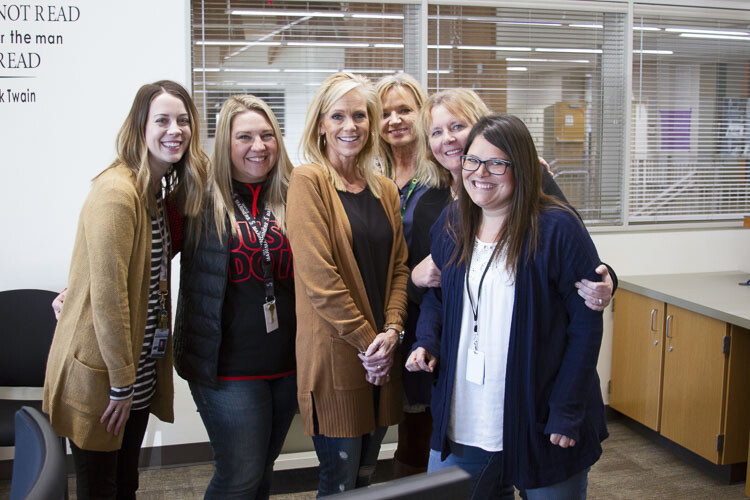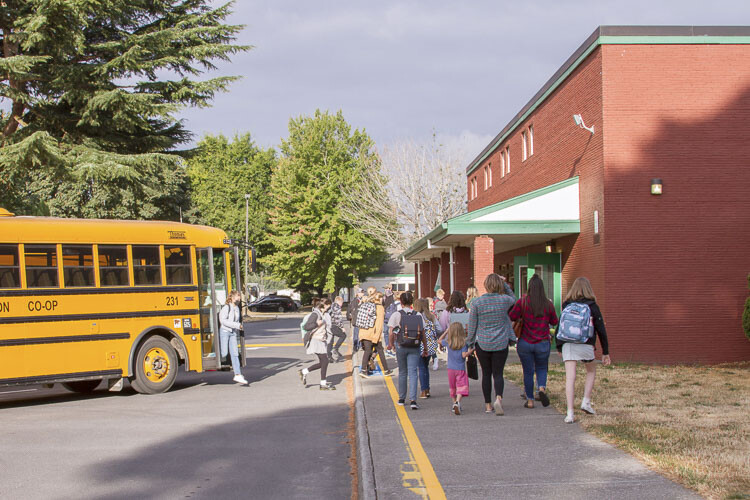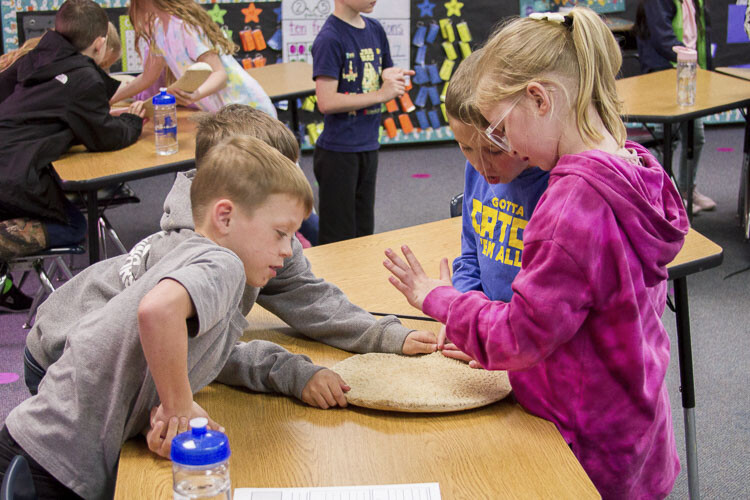
Schools nationwide face a crisis of students, particularly in younger grades, who read, write, and perform math well below their grade level and need help to catch up
Woodland’s public schools implement strategies and techniques to identify struggling students and help them recover learning lost due to remote school resulting from the pandemic lockdown. Schools nationwide face a crisis of students, particularly in younger grades, who read, write, and perform math well below their grade level and need help to catch up.
Many elementary students fell behind in reading due to remote learning and mask-wearing
Elementary students, particularly those who were in kindergarten and first grade during the 2020 lockdowns, fell behind in reading. “We’ve seen the greatest impact on third graders because they were kindergartners during 2019-2020,” explained Ashley Kleinschmidt, instructional coach for Columbia Elementary School. “Since effective reading evolves from creating sounds to creating words in kindergarten, first, and second grades, our current third graders were impacted most from both remote learning and mask learning.”

Many of this year’s second graders who entered kindergarten in 2020 are also struggling, not from the impacts of remote learning, but from mask learning. Malinda Huddleston, Kleinschmidt’s colleague and instructional coach for North Fork Elementary School, explained how remote learning and masked learning impacted reading skills, “Virtual instruction does not give teachers the opportunity to ensure all students are actively engaged and there’s no way to assess their reading skills by reading with them one-on-one,” she said. “When we returned to school but had to wear masks, teachers could not teach students how to articulate their mouths to make sounds and words since the masks prevented teachers from seeing students’ mouth movements.”
Additionally, research shows younger students can fall behind significantly for their entire academic career if they cannot read proficiently by the third grade. “As a district, we knew we had to take action to help our students recover from pandemic learning,” said Huddleston. “We have introduced screener tests, phonics surveys, and multisensory interventions to meet students where they are and improve their skills.”
Once teachers identify struggling students, interventions being implemented by both teachers and paraeducators provide additional instruction with a variety of activities. “We use tiles and letter boards so kids learn how to blend and segment their reading,” said Huddleston. “We also use software which uses audio and video so kids are seeing, hearing, and manipulating during their lessons, and this empowers teachers to reach kids using whatever learning style is most effective for each individual student.”
In addition to interventions, Woodland’s elementary schools adopted new curriculum and instructional materials highly aligned with reading skills. Teachers receive ongoing professional development to strengthen their skill sets to more effectively help both struggling students as well as those who may need additional challenges. “The investment the district is making in professional development for teachers has been incredibly impactful,” said Huddleston.
At Columbia Elementary School, special attention was given to the school’s Dual Language Program where native English and Spanish speaking students learn fluency in both languages. “Remote learning was especially difficult on our dual-language students, particularly our native Spanish-speakers,” said Kleinschmidt. “This year, we’ve dedicated extra time to those struggling students and use data-informed decisions so we can truly address those kids’ needs and we’re already seeing significantly better growth than last year.”

The renewed focus on improved teaching strategies has led to significant learning gains for students. “Thanks to the new curriculum and professional development strategies, this year’s kindergarteners are performing exceptionally well, outperforming even when compared to pre-pandemic classes,” said Huddleston.
Throughout the district’s elementary schools, teachers focus on strengthening their core instruction to help boost students’ reading abilities. “Our teachers have worked exceptionally hard to ensure they understand where their students are so they can differentiate and tailor lessons to the student’s needs,” said Kleinschmidt. “They’re fully dedicated to helping fill any learning gaps their students have.”
At the state level, legislators increased efforts to help schools identify students suffering from dyslexia and other learning challenges. Beginning in the 2021-22 school year, RCW 28A.320.260 directs school districts to use multi-tiered systems of support specifically targeting students in kindergarten through second grade to ensure struggling students receive additional interventions and learning recovery.
Woodland Middle School targets the specific needs of struggling students at each grade level
During the pandemic, remote learning required the team at Woodland Middle School to make significant adjustments to the schedule to address student and family needs. Once back in school full-time, the team analyzed and restructured the daily class schedule to better serve students. “We are extremely pleased to be back on track,” said Tara Eilts, Title Coordinator and Instructional Coach for the middle school. “By following our effective schedule structure, we’ve been able to build our students back to the level they were performing at pre-pandemic and far beyond it.”

Woodland’s elementary schools collaborate closely with Woodland Middle School to assess significant reading gaps of incoming students or classes. “This way, we can design and implement unified instruction plans for our most struggling readers in CORE, Reading Intervention, and multilingual classes before the school year even starts,” said Eilts.
All fifth and sixth graders enroll in a block of two classes for both English Language Arts (ELA) and Mathematics. For those sixth graders excelling in math, they may qualify for an advanced math class during their two-period math block. “Research shows students need 90+ minutes of effective instruction in ELA and Math every day in order to make adequate progress,” explained Eilts. “With two class periods set aside for each ELA and Math, students are receiving an average of 94 minutes per day in each subject.”
Fifth and sixth graders needing additional support in reading are enrolled in a Reading Intervention class. “These classes are intentionally small in order to allow teachers to perform explicit, targeted instruction designed to increase student achievement and bring them back up to grade level,” said Eilts.
For seventh and eighth graders demonstrating consistent performance in ELA and Math, students take one class of each every day, averaging 47 minutes per day in each subject. Students who need additional support take two periods of Math and/or ELA every day which provides 94 minutes per day, five days a week. “Students who need assistance with reading take dedicated classes with a specialized reading teacher,” said Eilts. “Just like the younger grades, these specialized reading classes are kept intentionally small so teachers can utilize explicit, targeted instruction with their students specifically based on the student’s assessed need.”
Woodland High School uses deliberate curriculum design and intervention programs to improve learning
Just like students in younger grades, Woodland’s high schoolers receive support and intervention from a variety of ways. For entering freshmen, the school’s Positive Academic Support System (PASS) identifies struggling students and pairs them with a staff member who serves as an in-school coach. The school introduced PASS in 2019 to support students with the goal of reducing the failing of classes in their first year. “Students who end their ninth year on-track passing all of their courses are 3.5 times more likely to graduate from high school than peers who fail one or more classes,” explained Dan Uhlenkott, WHS’s Assistant Principal who helped develop PASS. “Many PASS students actually refer to their PASS mentors as ‘school moms’ who provide students with the push they need to succeed each school day.”
Throughout every grade at the high school, teachers intentionally design course curricula to meet and exceed standard expectations of learning. “We’re working deliberately to align all courses within a department so we can improve student learning and better diagnose what holes may exist in our curriculum,” Sharon “Shari” Conditt, government teacher and one of the teaching coaches for the school. “With a well-supported curriculum, we can better align our assignments and take all the necessary steps to ensure teachers identify, address, and support our students’ needs.”
Partnering with families remains instrumental for student learning in school and at home
In order to involve families and ensure parents and guardians can partner with schools to improve student learning, the district introduced a dedicated two-way communication tool called Talking Points at the beginning of the school year.
Talking Points provides a secure method for teachers and administrators to text parents and students as well as send video messages without concerns of lack of encryption or failed recordkeeping, issues which cannot be presented when using traditional text messaging or social media platforms. Additionally, both parents and students can ask questions and have two-way conversations with their teachers and school administrators.
“In order to fully recover lost learning, it is essential for families and schools to partner and jointly support struggling students so they receive the help and support they need both at home and school,” said Michael Green, Superintendent for Woodland Public Schools. “We introduced Talking Points this year to provide the key communication solution both our teachers and families need to enhance this learning partnership, and it’s proven incredibly effective.”
By using Talking Points, teachers directly message parents and students to quickly identify areas where students may be struggling, help work through challenges facing students at school or home, and much more. “Frequent, active family involvement makes a huge difference in the success of students,” explained Eilts. “Talking Points makes it easier than ever to have effective, efficient, and consistent two-way communication with all families.”
The Talking Points platform also empowers principals and administrators to send schoolwide messages and updates to families immediately, an important tool for emergency communication with families.
Learn more about how Woodland Public Schools educates students and serves the community by visiting the dedicated news webpage at www.woodlandschools.org/news/wsd
Information provided by Woodland School District.
Also read:
- Opinion: OIC tells consumers not to pay for ‘insurance’ you won’t likely benefit from: Does that include WA Cares?Elizabeth New (Hovde) of the Washington Policy Center believes you should consider yourself warned by the Office of the Insurance Commissioner about WA Cares and its maybe-only benefit.
- Opinion: Same road, different speed limit?Target Zero Manager Doug Dahl addresses a question about speed limit signs going into and leaving town.
- Progress being made at GRO Parade of Homes siteThe 2024 GRO Parade of Homes, presented by the Building Industry Association of Clark County, is a little more than a month away, and builders are busy completing the luxury homes before the big event, scheduled for Sept. 6 through 22 in Felida.
- Has trust in the media tanked over coverage of President Biden’s decline?After President Joe Biden’s calamitous debate performance against former President Donald Trump, and days after Biden’s decision Sunday not to seek reelection, there are still many questions about how the news media covered Biden’s mental and physical decline.
- Opinion: Hiding the growing cost of the Interstate Bridge replacementJoe Cortright of the City Observatory addresses the rising cost of the Interstate 5 Bridge replacement project.
- Letter: ‘This election I am NOT voting for Greg Cheney’Clark County resident Wynn Grcich shares her thoughts on Rep. Greg Cheney and the issue of fluoridation in area drinking water.
- Major gas line leak closes major arterial in Clark CountyFirefighters from Clark County Fire District 6 responded Thursday (July 25) afternoon to the scene of a major natural gas leak on NE 99th Street, directly in front of Columbia River High School.











